
OR
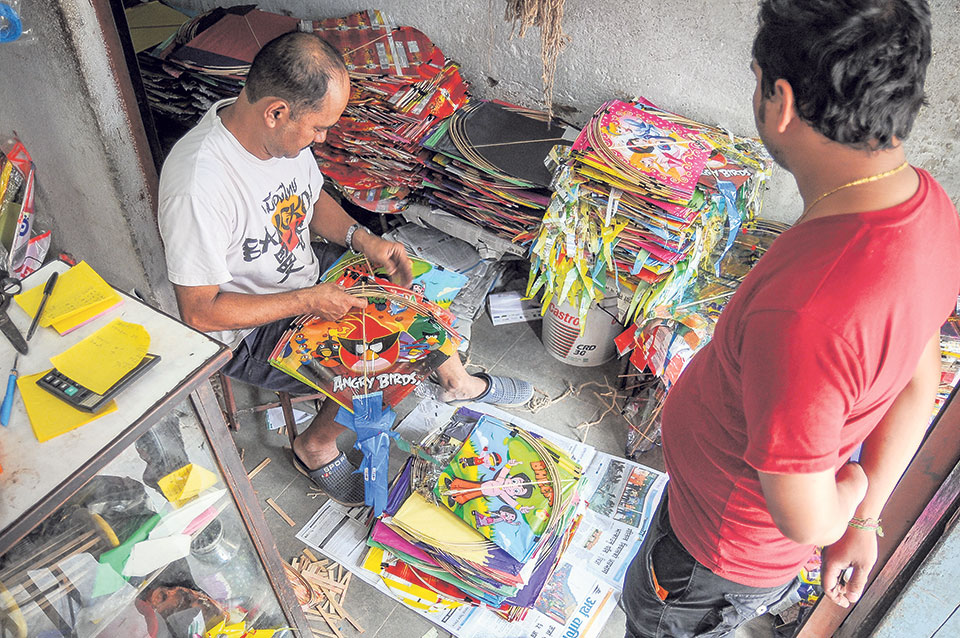
“Kites have always been a serious business,” says Sundar Man Manandar who owns a kite shop in Kalimati, Kathmandu. Recollecting his childhood memories, Manandar states, “Flying kites was not just a game but it used to be an intense combat among neighbors and friends.”
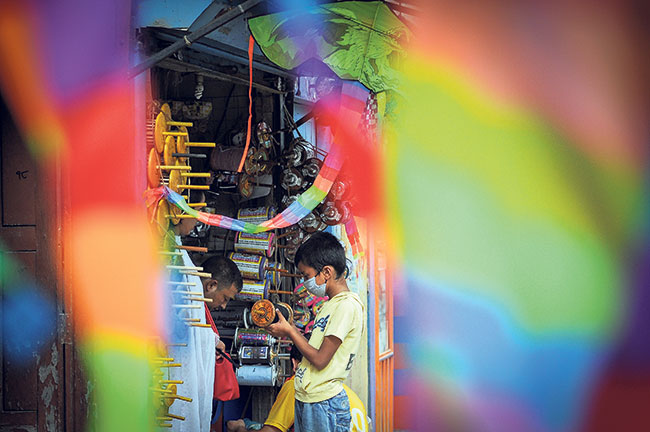 When he was a child, the festive season of Dashain meant fun and excitement which inevitably meant kites. He remembers the clear blue skies of Kathmandu being filled with colors during this time of the year. “Kathmandu had many open spaces back during those days,” says Manandar.
When he was a child, the festive season of Dashain meant fun and excitement which inevitably meant kites. He remembers the clear blue skies of Kathmandu being filled with colors during this time of the year. “Kathmandu had many open spaces back during those days,” says Manandar.
“It wasn’t unusual for us to spoil other’s paddy fields by stepping on them in order to win a kite fight and we would often get beaten up in the process,” he adds. Their main motive was to win by entangling other kite. Once the opponent’s kite fell, Manandar along with his friends would run across the cultivated fields to capture the defeated kite. “The opponent’s kite would then be ours. It used to be a real battle,” he says.
Winning the kite fights was not easy. It required a lot of specialized tricks. The most effective one was to rub the kite string with a paste of pearl tapioca, egg and powdered glass known as ‘manjha’. This would make the string extremely strong. Manandar’s father used to personally make those threads coated with ‘manjha’ and sell it at his shop. These threads are now not made in Nepal as they are imported from Bareilly in India.
His shop in Kalimati has been selling kites for four generations now. Manandar fondly remembers his grandfather making kites. They used to be made with Nepali paper. “Ours was one of the first shops in Kathmandu that started selling kites,” says Manandar. His father then continued making different varieties of kites with Nepali paper. After his father, it was Manandar’s responsibility to carry forward this family business. However, he never made Kites as they started getting imported from India during his time.
According to Manandar, nobody makes kites these days in Nepal. Kites that come to Nepal are made in Kolkata in India. “Making kites out of Nepali paper will up the cost to about Rs 50 and kites coming from India cost only five rupees,” says Manandar. “So customers prefer Indian kites and making kites in Nepal is not beneficial for us,” he adds.
Manandar’s shop sends kites to different parts of Nepal. These places include Dhulikhel, Lamjung, Pokhara, Hetauda, and Narayanghat. According to Manandar, they have customers ranging from young children to adults up to 50 years of age. “Age does not define the love for flying kites. This festive season is an exciting time for all,” says Manandar adding that even he loves to fly kites and does so at every available opportunity.
Colorful skies
Manandar’s sister-in-law too owns a kite shop just across the street. Krishna Manandar was rolling kite thread into a kite string spool (lattai) with the help of a machine when The Week met her. “These threads are imported from India but these wodden lattai are made in Nepal,” says Krishna.
Krishna claims that the instrument that helps them in rolling lose threads into a spool was made by them. “This instrument is not imported. We made it here to make our work easier,” she says.
Krishna’s father used to make kites when she was young. She has fond memories of her sister playing with kites but she herself was never interested in them.
“I started selling kites after my marriage. I have been working here for seven years now,” says Krishna. According to her, there has been a drastic change in the designs of kites now. Previously, paper kites were more popular. They usually comprised of dull and boring colors. Now, she says, plastic kites are more popular.
“Children get attracted to kites that have the images of spiderman, batman, chota bheem and various other cartoon characters on them,” she adds. There has also been an increase in customers who come looking for huge kites. The business is also not popular as it used to be seven years ago. “Most children these days don’t know how to fly kites,” she exclaims sadly.
They import kites three months prior to Dashain from India. “I enjoy this time of the year,” says Krishna. “Everyone seems to be in a good mood and my shop looks attractive and colorful,” she adds. According to her, the best part about selling kites is that everyone can afford it. People from all kinds of financial background come to her shop to buy kites. “It seems like everyone is able to enjoy this festival,” she says.
Festive competition
Niroj Munikar, president of Zenith Alumni Association, is busy preparing for the upcoming event, Changa Chet Competition 2074. “The event is on September 27 and there is a lot left to do. We have less than a week’s time to get everything ready now,” said Munikar who was inundated with work the last time we spoke to him.
“When I was in school, children used to love flying kites during Dashain. Now you rarely see kites in the sky. Our aim is to get this generation out of the virtual world and preserve our culture at the same time,” states Munikar. The event is taking place in Chobhar Height and the main goal seems to be to attract as many youth as they can. “We want them to know that the real world can be a lot more fun,” he adds.
This is the second time that Zenith Alumni Association is organizing such an event. The participants in the competition will be divided into three groups.
There will be two rounds in the competition. The first round will be a competition between the participants of the respective groups and the second round will be between the winners of each group. The participant whose kite is still soaring high till the end of the game will be declared the winner.
The primary idea behind this competition was to recreate those moments when kite battles during Dashain used to be the most awaited game of the year. “We want today’s school children to enjoy Dashain in the same way we did,” he concludes.
The kite runners of Kathmandu
Dashain is synonymous with a lot of things and one of them is kite flying. If you didn’t actively participate in it, you cheered others on from your balconies. And when you found a stray kite lying in your garden, you pretend flew it holding on to the piece of thread still attached to it.
Now, though you see only a few kites up in the sky, whenever you hear a voice egging others on to compete with them in a kite battle you find yourself peeking out of the window reminiscing the old days. The Week spoke to some people who find themselves thinking about their kite flying days every festive season.
Sijan Subedi, 25
 Back during my school days, my friends and I were the best kite flyers in our locality. We were then known as the ‘Tole champions’. We used to start flying kites one month prior to Dashain.
Back during my school days, my friends and I were the best kite flyers in our locality. We were then known as the ‘Tole champions’. We used to start flying kites one month prior to Dashain.
Many a times we used to get punished at school for not completing our homework. Obviously, kite flying in Dashain was more important than studies. That made us the naughtiest and the most popular kids in Waling, Syangja.
We even had mini competitions with our friends for about ten days in Dashain. It seems like a story now, but winning those competitions was a big deal for us.
Nischal Dhungel, 23
 Kite flying for me was more like a journey than just a game for entertainment. Every Dashain I strived to do better than the previous year. I remember flying kites with my younger brother. He obviously had to hold the kite to throw it up and it was me who would handle the rest.
Kite flying for me was more like a journey than just a game for entertainment. Every Dashain I strived to do better than the previous year. I remember flying kites with my younger brother. He obviously had to hold the kite to throw it up and it was me who would handle the rest.
Eventually as I grew older, I learnt how to compete with other kites, to raise the kite higher in the sky and to get it down. I remember flying kites till six or seven in the evening. It would often get dark and we could no longer see our own kites.
Siddhartha Maharjan, 26
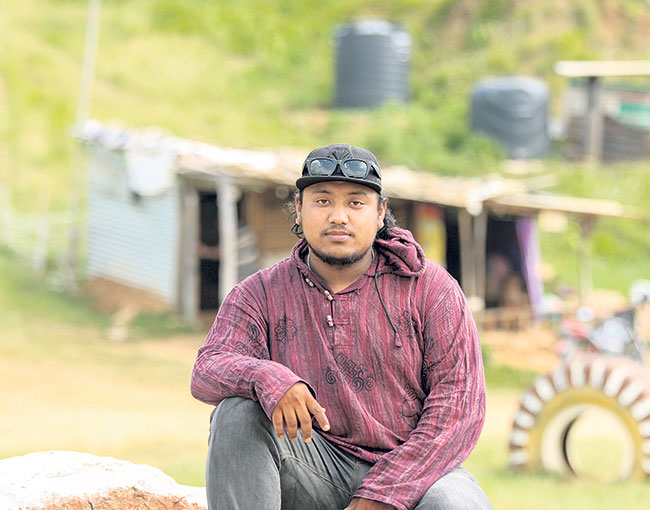 Dashain used to be very exciting five to six years ago. You could see many kites in the sky and there were definitely many more happy faces on the terraces of Kathmandu valley. Children these days are more into technology and they have forgotten what real life joy is.
Dashain used to be very exciting five to six years ago. You could see many kites in the sky and there were definitely many more happy faces on the terraces of Kathmandu valley. Children these days are more into technology and they have forgotten what real life joy is.
I still fly kites during Dashain because it gives me immense happiness. I have a group of friends with whom I have kite fights for at least three to four days before Dashain. We get so engrossed in flying kites that most of the time we skip our meals in order to win a battle.
Sujit Maharjan, 28
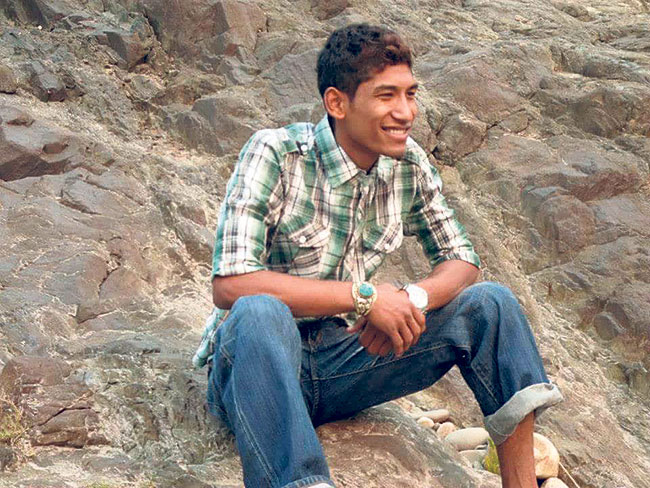 Dashain is definitely the most exciting time of the year for me. I love flying kites and have numerous fond memories but last year was a different experience. My friend told me about a kite flying competition and I decided to give it a shot.
Dashain is definitely the most exciting time of the year for me. I love flying kites and have numerous fond memories but last year was a different experience. My friend told me about a kite flying competition and I decided to give it a shot.
The event got really exciting after I got selected for the second round. After defeating numerous contenders in the second round I was declared the winner of the competition and was even awarded the title of ‘Mr Sharp’. You must fly a kite to experience what it feels like. It’s amazing.
Shambhavi Basnet, 21
 My elder brother and I used to fly kites during Dashain holidays. I truly miss those days. It was a lot of fun although I did not exactly know how to fly them.
My elder brother and I used to fly kites during Dashain holidays. I truly miss those days. It was a lot of fun although I did not exactly know how to fly them.
My brother used to make me hold a kite and throw it up in the sky. I guess that is what most young siblings do. I remember spending most of our time at our terrace during the Dashain holidays. We would often look at other colorful kites in the sky and try to make our kite reach as high as them. That, however, never happened. We were just not good at flying kites, I guess. But those amazing memories with my brother will surely be cherished forever.
You May Like This
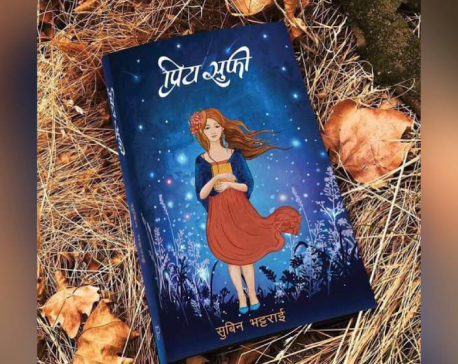
Life is never too pointless to be ended
"Priye Sufi," a book by Nepali author Subin Bhattarai, is a moving and consoling book. The story's primary lesson is... Read More...
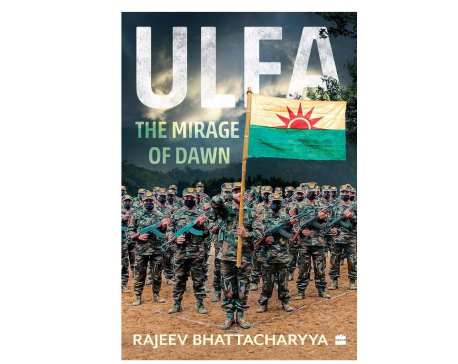
'ULFA: The Mirage of Dawn’ offers a remarkably balanced narration on history of ULFA
Rajeev Bhattacharyya’s book offers a remarkable history of ULFA, its formation and rise to prominence, the interplay of its principal... Read More...
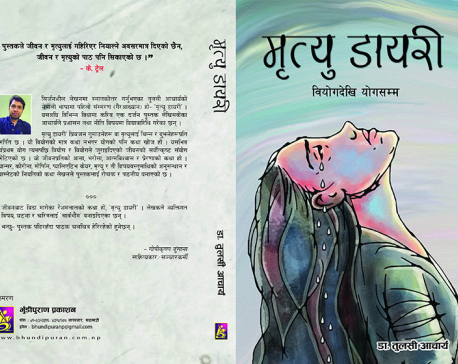
Mrityu Diary: A must read book about life and death
"Mrityu Diary" or the “Death Diary” is a book written by the author Tulasi Acharya, which is currently available in... Read More...



Just In
- Bhajang and Ilam by-elections: 69 polling stations classified as ‘highly sensitive’
- Karnali CM Kandel secures vote of confidence
- National Youth Scientists Conference to be organized in Surkhet
- Rautahat traders call for extended night market hours amid summer heat
- Resignation of JSP minister rejected in Lumbini province
- Russia warns NATO nuclear facilities in Poland could become military target
- 16th Five Year Plan: Govt unveils 40 goals for prosperity (with full list)
- SC hearing on fake Bhutanese refugees case involving ex-deputy PM Rayamajhi today










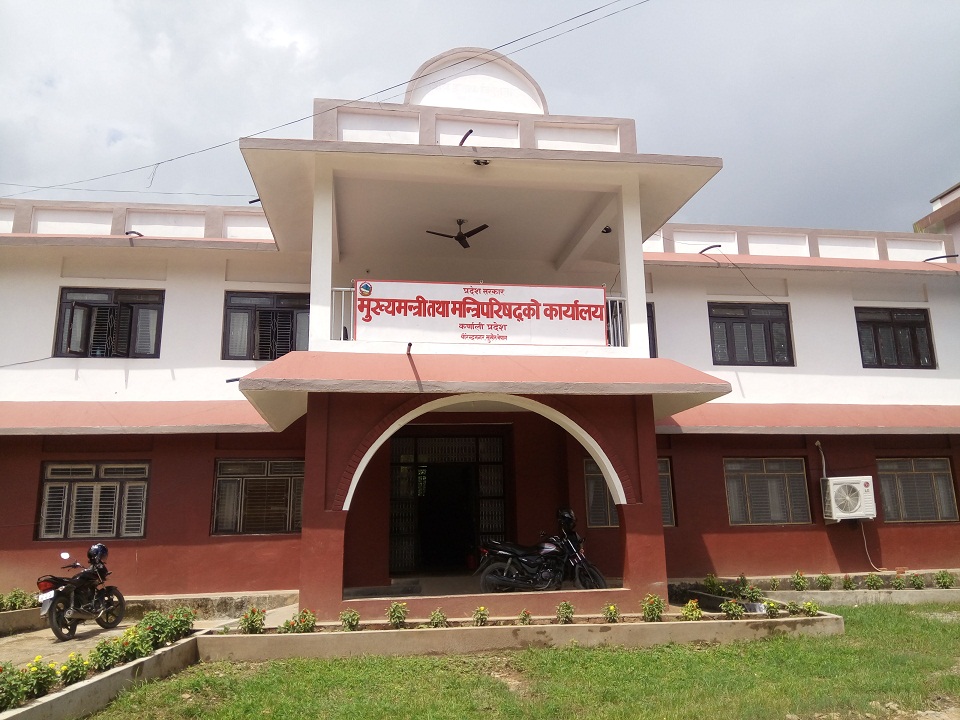

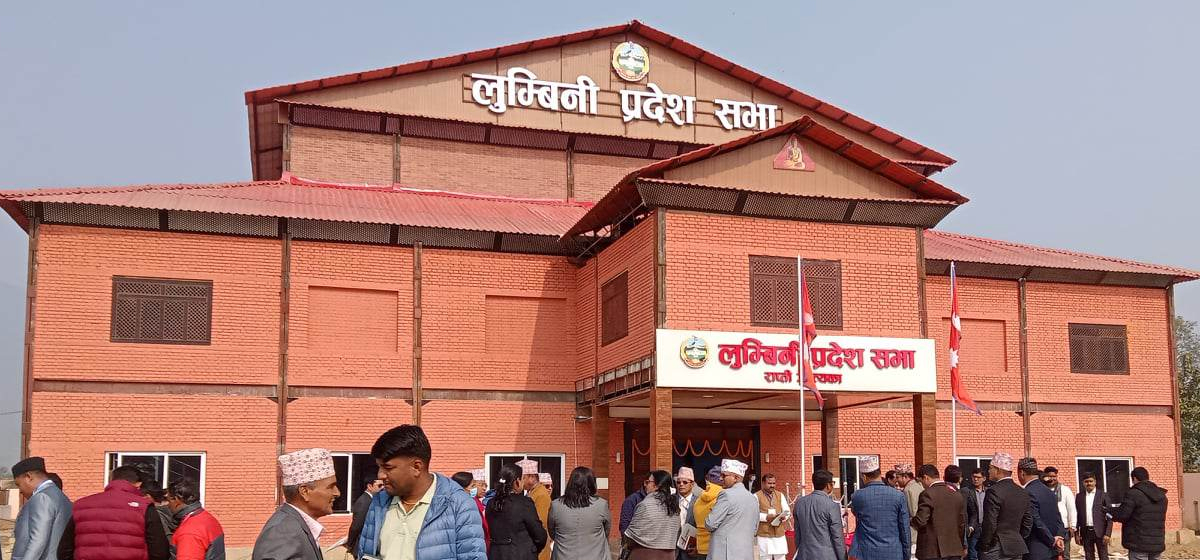


Leave A Comment